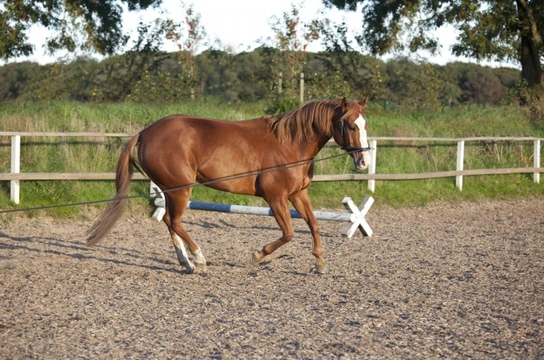
A Short Guide to Lungeing a Horse
Lungeing can be tricky to do well but it certainly is an invaluable accomplishment with some very useful benefits. Here are some of the reasons why it is good to learn how to lunge:-
- Lungeing forms a big part of a young horse’s education, learning to accept the tack and later on, the rider. It is also used to reinforce the comprehension of the voice commands and teach the horse the different words for each gait
- A competent horse person can work a horse well on the lunge in a 20-minute session and that can be worth 40 minutes under saddle, ideal if you are short of time or daylight in the winter months
- Lungeing is useful with a fresh horse or pony and can save a few tumbles. A few minutes on the lunge before the rider hops on board can make all the difference
- Vets use lungeing as part of a lameness assessment, sometimes on a hard surface and sometimes on the soft; it can provide information about where the problem might lie and in which limb. It can be very helpful for a horse owner to see their horse move independently of a rider if concerned that he doesn’t feel quite right
- Handling lunge equipment competently can be very useful if a horse is difficult to load or difficult to lead; the lunge line is longer than a lead rope which can be both safer and more effective for the handler
- Lungeing is a useful fittening tool and provides a third exercise option in addition to schooling and hacking
- It can be useful to school the horse without the rider and it is possible to develop some fairly advanced flatwork with an experienced handler. Equally the horse can also work over poles and small fences, ideal if you want to give your horse some variety but do not want to jump yourself
- Lungeing is an option for a horse that is sound to work but cannot carry a rider or wear a saddle
- Lunge lessons on an appropriate horse and with an experienced instructor are a great way to work on your position without having to think about controlling the horse as well. Lunge lessons are an invaluable tool in the training of the rider
What will I need to lunge my horse?
Horses are usually lunged in either their bridle with the lunge line attached in one of several different ways or, in their bridle and a lunge cavesson. The Cavesson is a special piece of equipment which fits over the top of the bridle and in place of the horse’s usual noseband so you will need to remove this. The lunge cavesson has several rotating rings on the nose which gives the handler different options for attachment. You can choose the central ring or a ring to the inner side of the horse’s head depending on how the cavesson fits on the horse. This will need adjustment when you change the rein but if you use the central ring, then you won’t need to do this. The rings swivel which means it is easier to keep the lunge line free of twists and tangles.
A horse can be lunged in either a saddle or a roller. A saddle is a good option, particularly if you might then want to lunge a rider or ride the horse yourself after a warm-up session. The alternative, a roller, can be quicker if you do not intend to ride the horse or lunge a rider and this is also appropriate for a horse that has not yet been backed.
It is usual to add other attachments to the tack such as side reins or schooling aids of which there are many, a Pessoa, Chambon or de Gogue to name a few. These are quite specialist devices and need to be handled with care by someone who is experienced not only in how to use them but in how to fit them.
Because some horses can become quite exuberant on the lunge, it is usual to fit protective equipment such as brushing boots or tendon boots and overreach boots to safeguard the horse from injury. It is sensible and advisable to wear a hat when you lunge and gloves are a must; the best gloves to wear are smooth leather so the lunge line can slide through your hand more easily, so not a riding glove which tends to have a textured surface to promote grip.
Learn to lunge with help from someone competent and experienced; it is quicker because you won’t develop any bad habits and ultimately safer too. Start with a quiet and easy horse and work your way up to sharper and more challenging horses and then youngsters. If you lunge a lot of horses and lunge other people’s horses, you may want to take your own equipment to use such as lunge line and whip and any schooling aids. Lungeing a horse is an important part of horse ownership and an invaluable skill if done well.



